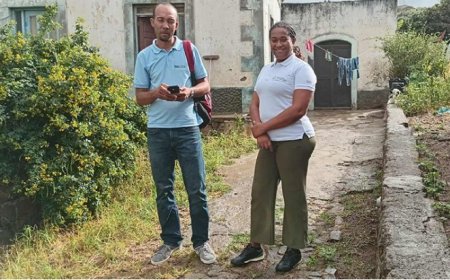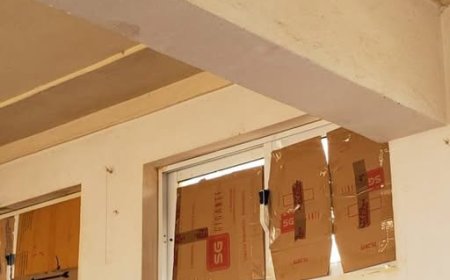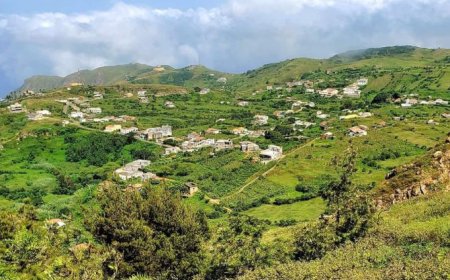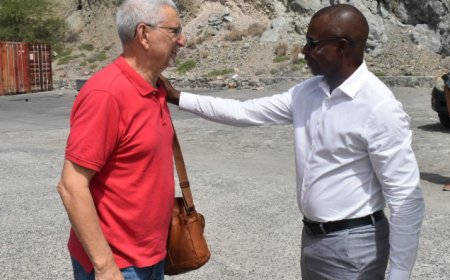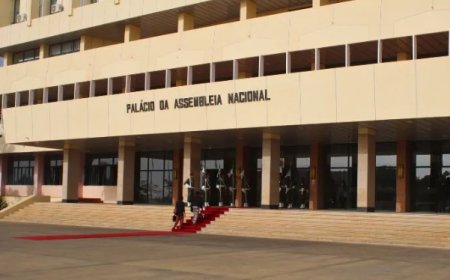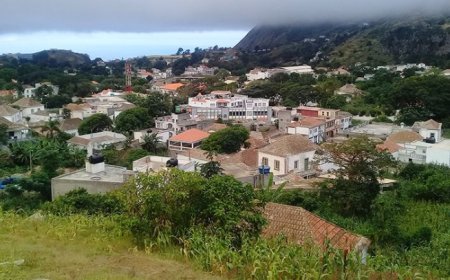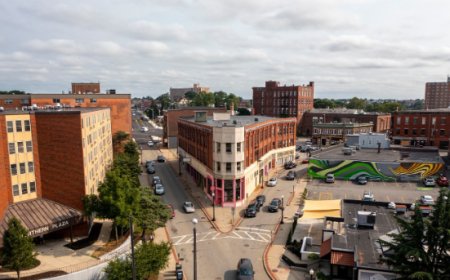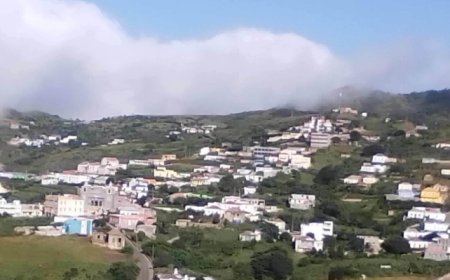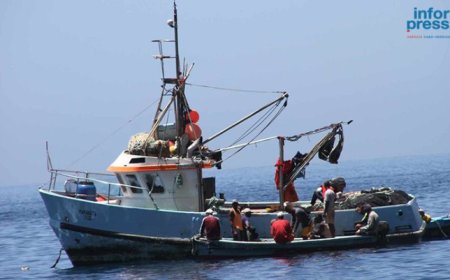Moisés Santiago and Ana Lomba, an icy adventure, on our unforgettable cruise through Alaska
For us, Moisés and my companion, friend and wife Ana, the passion for traveling has always been the driving force behind us. We've explored many corners of the world, but this time, the search for a different experience led us to an idea that we'd been looking forward to for a long time: an Alaskan cruise, for Ana's birthday, July 10th. And what a choice!
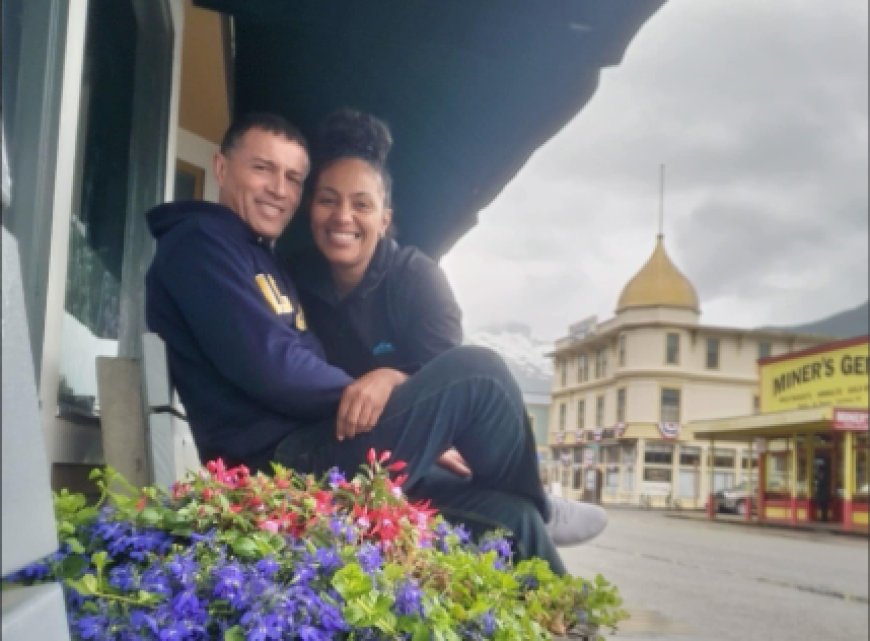
Our journey began at TF Green International Airport in Warwick, Rhode Island. We were already looking forward to embarking on this great adventure. After a stopover in Detroit, Michigan, we finally landed in Seattle, Washington. The energy of the city was already welcoming us with its peculiar charm. From there, it was just a few minutes by cab (very friendly and chatty) to the Port of Seattle, where the imposing sight of the International Royal Caribbean Anthem of the Seas awaited us.
And what a ship! We were already impressed on arrival. The Anthem of the Seas, which holds 5,000 passengers and 1,500 crew, turned out to be not only beautiful, but also incredibly comfortable and, in fact, wonderful. Every detail, from the grandiose architecture to the carefully planned interior spaces, contributed to a feeling of luxury and well-being. The promise of days exploring Alaska's icy landscapes aboard such a spectacular vessel only added to our excitement.
Over the next few days, we would be treated to views that defy the imagination, from towering glaciers, mountains as far as the eye can see to lush wildlife. The combination of Anthem of the Seas' comfort and amenities with the unspoiled beauty of Alaska promised a trip of a lifetime. We can't wait to relive every moment of this adventure.
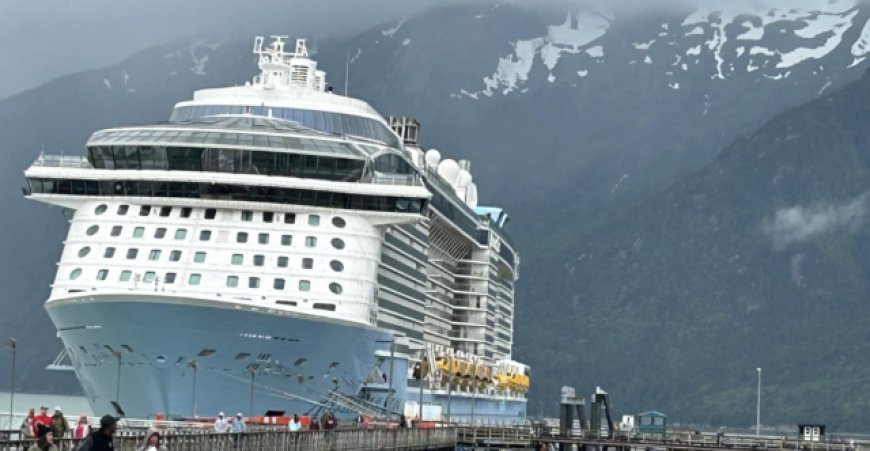
Juneau - The Capital surrounded by nature and history
Juneau is no ordinary capital city. Unlike many others, it is not accessible by road, which already makes it a special and isolated place, surrounded by grandiose nature. It's the perfect combination of a vibrant city and the untouched wildness of Alaska.
A Dive into History
Juneau's history is rich and fascinating. Long before the arrival of Europeans, the area was inhabited by native Alaskan tribes, especially the Tlingit people, who called the region Dzantik'i Héeni ("River of the Flounder Base"). They used the site for fishing, a testament to the natural abundance of the area.
The turning point for what we know today as Juneau came in 1880, with the discovery of gold by prospectors Joseph Juneau and Richard Harris, guided by Tlingit chief Kowee. This discovery triggered a veritable gold rush, attracting hundreds of prospectors and adventurers from all over the world. The town that sprang up from there was initially called Harrisburg, but soon took on the name of Juneau.
In 1906, Juneau was officially designated the territorial capital of Alaska, and then, in 1959, it became the capital of the 49th state of the United States. Today, the city's economy is mainly driven by government, tourism and fishing, keeping the spirit of its founders alive while adapting to new times. You can still see many historic buildings from the late 19th and early 20th centuries in the city center, a real trip back in time!
Must-see attractions in Juneau
Juneau offers an incredible variety of activities, both for nature lovers and those interested in culture and history:
-
Mendenhall Glacier:This is undoubtedly Juneau's most famous attraction. Just 20 kilometers from downtown, you can admire the majestic glacier up close, visit the visitor center to learn about its formation and even hike trails that lead to spectacular views, including the impressive Nugget Falls.
-
Whale and Wildlife Watching:The waters around Juneau are one of the main feeding grounds for humpback whales and orcas during the summer. Boat excursions offer the chance to see these giants of the sea up close, as well as other wildlife such as seals, eagles and bears.
-
Mount Roberts Tramway: For a breathtaking panoramic view of Juneau, the Gastineau Channel and the surrounding islands, take the cable car that climbs 550 meters to the top of Mount Roberts. At the top, you'll find trails, a nature center and a sanctuary for birds of prey.
-
Museums and History: Explore the Alaska State Museum to learn about the state's rich history, from native cultures to the gold rush and modern life. The Juneau-Douglas City Museum is also a great option for understanding local history. Walking through the downtown historic district is like stepping back in time, with its wooden sidewalks and charming buildings.
-
Tracy Arm Fjord: A boat trip through this narrow and spectacular fjord is an unforgettable experience. Surrounded by towering cliffs and culminating in the Sawyer Glaciers, it's a perfect place to observe wildlife and impressive waterfalls.
Juneau is a place where nature and history intertwine in a unique way, promising a truly memorable experience for those who, like us, visit Juneau.
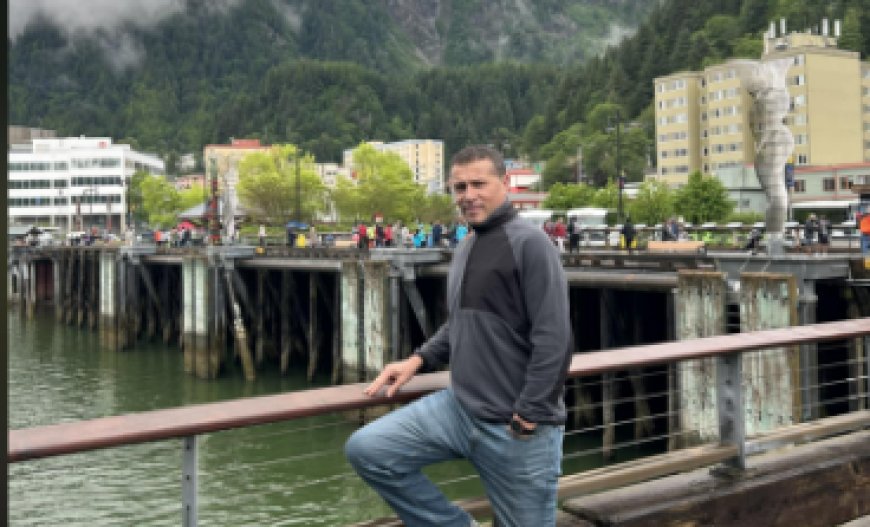
Skagway: The Gateway to the Alaskan Gold Rush
Skagway is a town that breathes history, especially that of the Klondike gold rush at the end of the 19th century. Its "frontier town" atmosphere is palpable, with many preserved historic buildings that transport visitors back to that time of adventure and challenge.
The Golden History of Skagway
The name Skagway derives from a Tlingit word, "skagua", which means "place where the north wind blows". For thousands of years, the area was inhabited by the Tlingit, who used the trail routes for trade.
However, the history of Skagway as we know it today began to take shape in 1897, when news of the discovery of gold in the Klondike, in Canada's Yukon Territory, spread. Suddenly, Skagway, which had been a small settlement, saw its population explode. Thousands of prospectors, known as "Stampeders", flocked to the town, which became the main starting point for the arduous 800-kilometer journey to the gold fields.
The town quickly became a hub of frenetic activity, with saloons, supply stores and even notorious characters like "Soapy" Smith, a notorious trickster. Life was tough and often lawless.
To facilitate the transportation of supplies and people over the steep mountains, the White Pass & Yukon Route Railroad was built, an incredible feat of engineering. Although the gold rush was short-lived, Skagway's legacy lives on, with the town retaining its original architecture and adventurous spirit.
Attractions and Activities in Skagway
Skagway offers a complete immersion in the Gold Rush era, as well as opportunities to take in the breathtaking Alaskan landscape:
-
Klondike Gold Rush National Historical Park:This park preserves the history of the gold rush in Skagway. You can explore more than 20 restored historic buildings in the center of town that recreate the life of the prospectors. There's also a visitor center with exhibits and films about the era.
-
White Pass Railroad & Yukon Route: One of the most popular attractions! Board this historic narrow-gauge train for a scenic journey that climbs almost 900 meters in 32 kilometers, offering spectacular views of mountains, glaciers, waterfalls and canyons. It's a fantastic way to relive the prospectors' journey.
-
Gold Rush Cemetery and Reid Falls: A short walk out of town leads to this historic cemetery, where many of the pioneers of the gold rush are buried, including the infamous Soapy Smith. Nearby, you can enjoy the beautiful Reid Falls.
-
Red Onion Saloon: This historic saloon, which was once a brothel during the Gold Rush, offers entertaining tours that tell the story of the town and its characters.
-
Skagway Museum: Located in Alaska's first stone building, the museum displays artifacts, photographs and historical records that tell the story of Skagway, from the Tlingit culture to the gold rush.
-
Hikes and Trails:For nature lovers, Skagway offers several trails that start near the center of town, leading to alpine lakes, waterfalls and panoramic views. The trail to Yakutania Point is an easy option with stunning views.
We chose to walk through the beautiful streets, enjoying the scenery and the buildings. Skagway is a place where you can feel the energy of history and the grandeur of Alaskan nature.
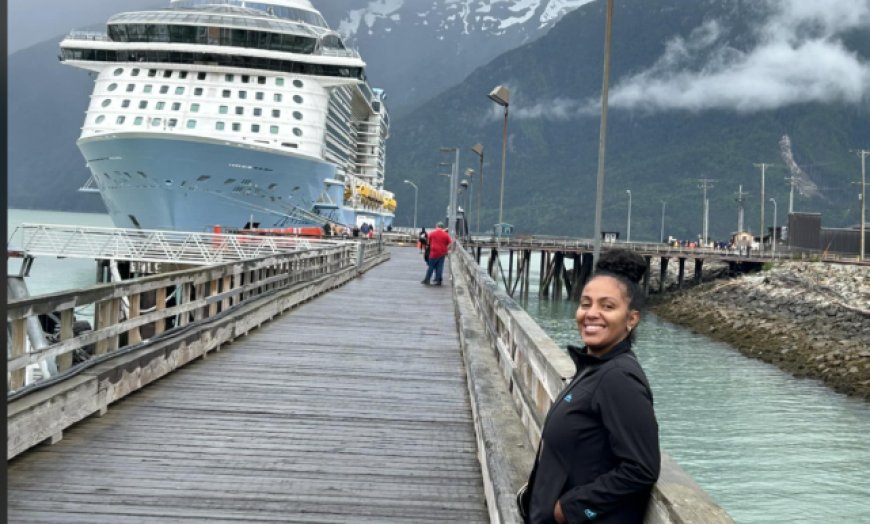
Yukon, Canada: The Land of Adventure and Wilderness
We went to Yukon. The Yukon is the smallest and westernmost of Canada's three territories, known for its vast and untouched wilderness, dramatic mountain landscapes and a rich history linked to the Gold Rush. The territory's capital is Whitehorse, where most of the population lives.
Some interesting facts about the Yukon:
-
Imposing Nature:The Yukon is a nature lover's paradise, with an abundance of wildlife, including moose (which outnumber humans!), Dall sheep, caribou and bears.
-
Climate: Most of the Yukon has a subarctic climate, with long, cold winters and short, hot summers. However, its landscapes change dramatically with the seasons, offering unique beauties in each one.
-
History of the Gold Rush: Like Skagway, the Yukon was the epicenter of the Klondike Gold Rush, with the discovery of gold in 1896 near the Klondike River, which led to the founding of towns like Dawson City.
-
Natural Phenomena: Due to its northern location, the Yukon offers the chance to experience the "Midnight Sun" in summer (almost 24 hours of daylight) and the spectacular "Aurora Borealis" in winter.
-
Cultural Diversity: The territory is home to diverse cultures, including 14 First Nations of Canada, who speak eight different languages.
The Yukon Suspension Bridge
We crossed the Yukon Suspension Bridge. The Yukon Suspension Bridge is a thrilling attraction located at mile 46.5 of the South Klondike Highway in British Columbia, Canada (very close to the Yukon border, and often included in tours departing from Skagway).
Here are some details about the bridge:
-
Location: It spans 60.96 meters over the Tutshi River Canyon, at a height of 17.36 meters above the rapids of the river.
-
Construction: Completed in 2006, the bridge's construction was a challenge due to its remote location, even requiring the use of helicopters to install the towers on the other side of the canyon.
-
Experience: Walking across the bridge offers impressive views of the turbulent waters of the Tutshi River and the surrounding mountainous landscape. It's an experience that can make your stomach turn a little, but the views are worth it!
-
Open-Air Museum: On site, there is also an open-air museum with interpretive exhibits on the history of the region, its wildlife and even mammoth bones. There is also a café and gift store.
-
Access: It's a popular destination for cruise ship passengers visiting Skagway, with many excursions including a stop at the bridge, as well as being accessible by car via the South Klondike Highway.
This excursion through the mountains to the Yukon Suspension Bridge is a fantastic way to experience the beauty and grandeur of Alaska and Canada. Ana and I enjoyed the trip and the views were unforgettable!
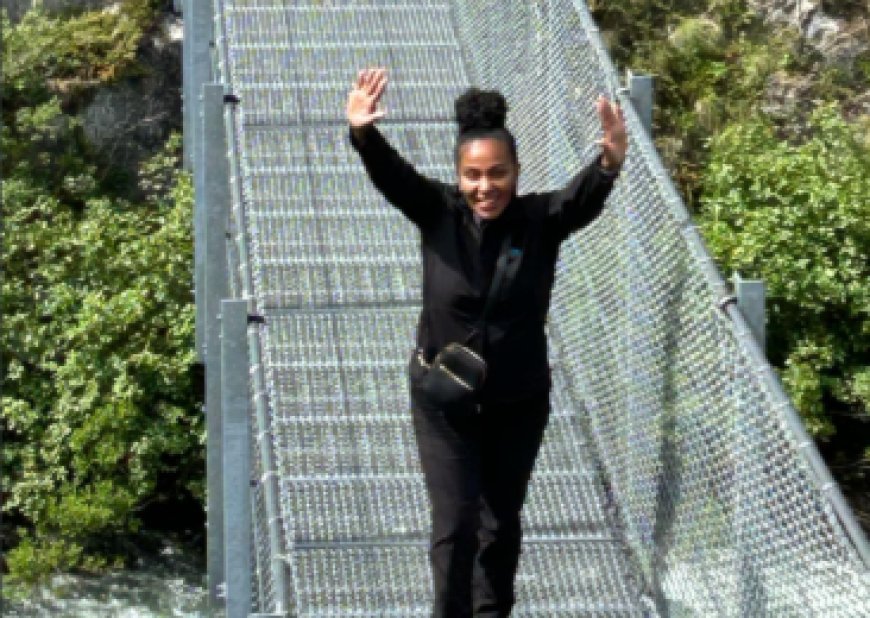
Dawes Glacier: An ice show in Alaska
From the ship we went to see Dawes Glacier, an impressive tidewater glacier located at the end of Endicott Arm, a spectacular fjord that stretches for about 48 kilometers and is part of the Tracy Arm-Fords Terror Wildlife Area in southeast Alaska.
Here are some details about Dawes Glacier:
-
Origin and Flow: The Dawes Glacier originates in the Stikine Icefield, near the border between Alaska and Canada, and flows for approximately 32 kilometers until it flows into Endicott Arm. The ice moves slowly, about 4.5 meters a day, and is fed by multiple tributary glaciers.
-
Appearance and Color: As you get closer to the glacier, the air gets colder and the fjord narrower. Dawes Glacier's ice mass is a dazzling blue color, which is due to the absorption of all the other colors of the spectrum by the density of the ice, allowing only blue light to escape. The dark stripes that can be seen along the glacier are signs of the tributary glaciers that join the main body.
-
Calving: One of the most exciting moments when visiting Dawes Glacier is witnessing the "calving", which is the detachment of large blocks of ice from the face of the glacier into the water. This process is accompanied by a thunderous sound and can create significant waves. It is a powerful and unpredictable natural spectacle.
-
Wildlife: Endicott Arm and Dawes Glacier are also important breeding grounds for harbor seals, which can often be seen resting on floating ice floes. In addition, it is possible to spot mountain goats on the cliffs, humpback whales and various seabirds, including bald eagles.
-
Access: Dawes Glacier is usually visited via cruises and boat excursions that depart from cities such as Juneau or Skagway. The boats sail along the fjord, past waterfalls and snow-capped mountains, until they reach the face of the glacier.
- The Dawes Glacier is a great place to visit.
The passage through Dawes Glacier was an experience that showed us the grandeur and unspoiled beauty of Alaskan nature, leaving a very good and lasting impression.
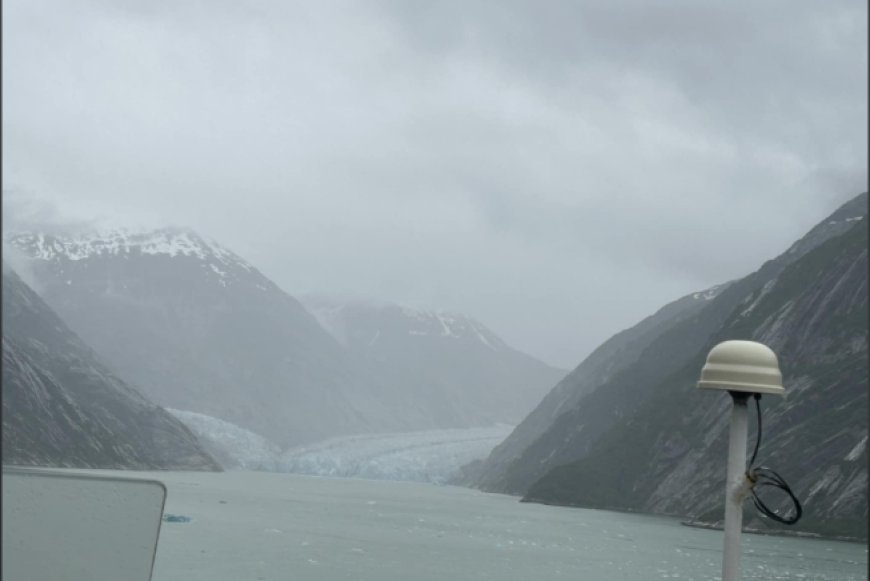
Visit to Victoria, British Columbia, Canada
Victoria is the capital of the province of British Columbia and is located on the southern tip of Vancouver Island. It is known for its British heritage, its beautiful gardens and its vibrant atmosphere.
-
British Heritage and Architecture: The city is adorned with flowers and colonial architecture, which gives it an old-world charm. The Inner Harbour is the heart of Victoria and a starting point for many tourist activities. This is where you'll find the iconic British Columbia Parliament Building and the majestic Fairmont Empress hotel. The Parliament Buildings are an outstanding example of neo-baroque architecture and are home to the Legislative Assembly of British Columbia. They offer free guided tours throughout the year, allowing visitors to explore their rich history and architecture.
-
Flower Streets and Gardens: Victoria is often called the "City of Gardens" because of its abundance of flowers and green spaces. If you've visited the "flower streets", you've probably experienced this charming aspect of the city. One of the most famous highlights is the Butchart Gardens, a world-renowned floral display garden, designated a National Historic Site of Canada. Created by Jennie Butchart from an old limestone quarry, Butchart Gardens offers a variety of themed gardens, such as the Sunken Garden, the Rose Garden, the Japanese Garden and the Italian Garden, with stunning floral displays that change with the seasons.
-
Attractions and Activities:
-
Inner Harbour: A hub of activity with street performers, food trucks and a stunning view of the ocean.
-
Chinatown: The second oldest Chinatown in North America, with narrow, winding streets like Fan Tan Alley, the narrowest street in Canada.
-
Royal BC Museum: A world-class museum that explores the natural and human history of British Columbia.
-
Whale Watching: Victoria is an excellent starting point for whale watching tours, where you can spot orcas, humpback whales, gray whales and minke whales, as well as sea lions and seals.
-
Parks: Beacon Hill Park is a large urban park with gardens, trails and views of the ocean.
Victoria is a city that offers a mix of history, culture, nature and outdoor activities, making it a popular destination for visitors from all over the world. It's easy to get around the city, including by bicycle, which contributes to its peaceful and welcoming atmosphere. We love visiting Victoria.

The Aviation Giant: Boeing's Everett plant and the Boeing 777X
At the end of the cruise and arriving in Seattle, it was a must to visit Everett, the city that breathes aviation. The Everett Boeing Plant, located in Everett, Washington, is a place that defies the imagination. It is the world's largest factory by volume, a feat of engineering and logistics that houses the production of some of the largest and most advanced commercial aircraft on the planet.
The Magnificence of the Everett Factory
-
Colossal Size:To give you an idea of the scale, the plant covers an area of approximately 39.8 hectares (equivalent to 75 American soccer fields) and has an internal volume of more than 13.3 million cubic meters. It's so big that, in its early days, clouds even formed inside the building due to the humidity and hot air!
-
History and Production: Originally built in 1967 to manufacture the iconic Boeing 747 ("Jumbo Jet"), the Everett plant has been the birthplace of aircraft such as the 767, 777 and 787 Dreamliner. Seeing the assembly line in operation is a unique experience, with giant sections of aircraft being moved by cranes along miles of track.
-
A City in Itself: The factory operates like a small town, with its own fire brigade, medical center, restaurants and even a system of underground tunnels for transporting workers and supplies. More than 30,000 employees work there in three shifts to ensure continuous production.
-
The "Future of Flight":The visitor center, known as the "Future of Flight Aviation Center & Boeing Tour", offers an immersive introduction to the history of aviation and Boeing's technological advances, culminating in the exciting assembly line tour.
The Highlight: The Production of the Boeing 777X
Our visit to the production line of the Boeing 777X was particularly special, as it is the latest evolution of the 777 family and a truly innovative aircraft.
The 777X is Boeing's next generation long-range twin-engine jet, designed to be the world's most efficient twin-aisle airplane. It comes in two main variants: the 777-8 (for longer range) and the 777-9 (for greater passenger and cargo capacity).
Here are some of its production and technology highlights:
-
Composite Wings with Folding Tips: One of the 777X's most distinctive and innovative features is its long composite wings (more than 70 meters in span when extended). To allow the aircraft to operate at existing airports without problems, the wingtips are foldable, an ingenious solution that allows the aircraft to fit through airport gates the same size as today's 777s. Seeing this engineering in action at the factory is impressive.
-
GE9X engines:The 777X is powered by the massive GE9X engines, developed by GE Aviation, which are the largest and most powerful commercial jet engines in the world. They contribute significantly to the aircraft's fuel efficiency and reduced emissions.
-
Cabin Technology and Comfort:The design of the 777X incorporates advances from the 787 Dreamliner, such as a lower altitude cabin, improved humidity, cleaner air and larger windows. The cabin walls are thinner, which provides a wider and more comfortable interior space for passengers.
-
Assembly Process: The assembly of the 777X involves joining large sections of the fuselage, the composite wings and the installation of complex systems. It is a high-precision process that requires incredible coordination and cutting-edge technology, including robotics in some stages of wing manufacture.
Seeing such a grandiose and technologically advanced plane taking shape in the largest factory in the world was the culmination of our incredible trip.
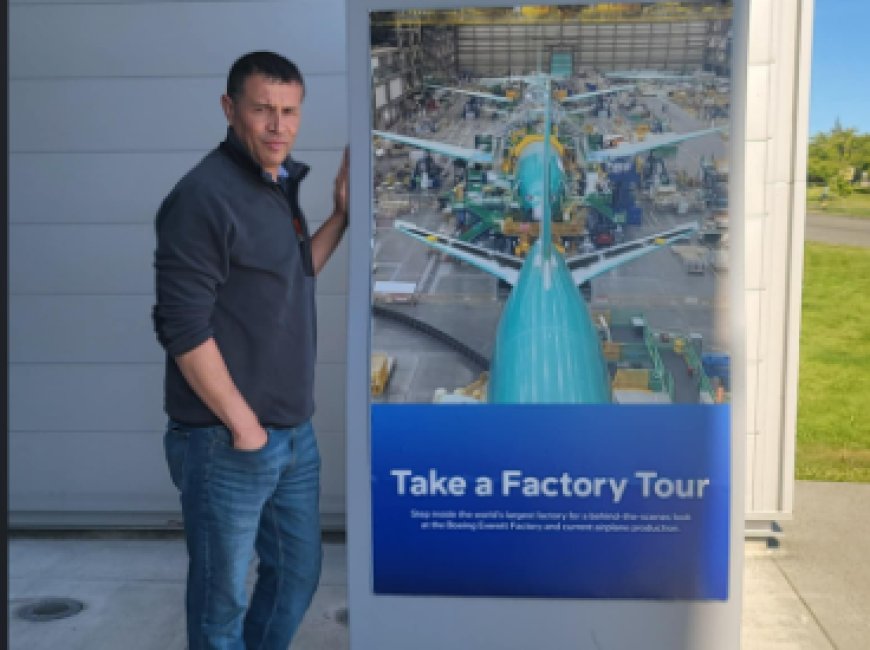
We extended our trip to Las Vegas! It's quite a contrast after the tranquility of Alaska and the natural beauty of British Columbia. We loved the water show at the Bellagio and the atmosphere at the Venetian.
Las Vegas is truly a unique place, known for its extravagant themed hotels, world-class entertainment and, of course, the famous casinos.
Bellagio and the Spectacle of the Fountains
The Bellagio is one of the most iconic hotels in Las Vegas, famous for its elegance and, above all, for the Fountains of the Bellagio show. This choreographed water show is one of the most impressive and free in the city, combining music, lights and water jets that dance in sync. It's an unmissable and truly magical attraction that draws crowds at every performance.
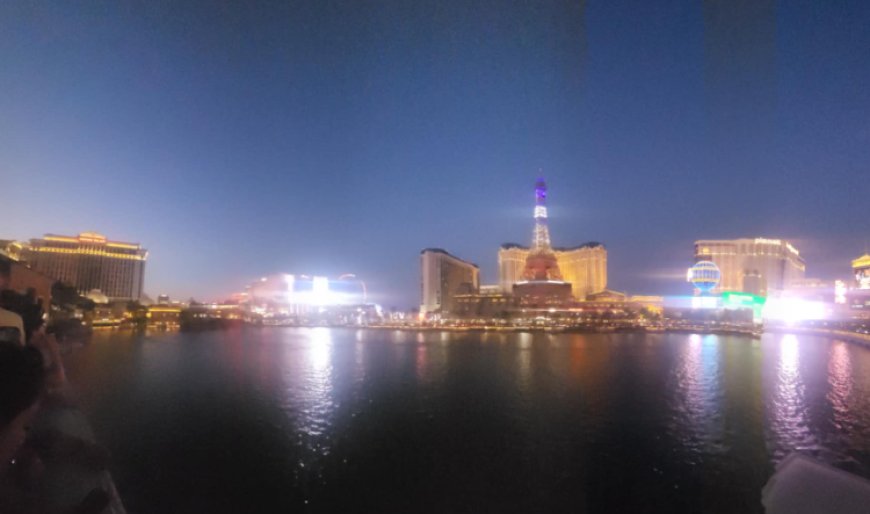
The Venetian Resort Las Vegas
The Venetian Resort Las Vegas is another luxury hotel-casino that stands out for its Venetian theme. It recreates the atmosphere of Venice with indoor and outdoor canals, gondolas with singing gondoliers, replicas of famous landmarks such as the Rialto Bridge and St. Mark's Square, and stunning architecture. In addition to casinos and haute cuisine restaurants, the Venetian offers a luxury shopping experience and a variety of shows and entertainment.
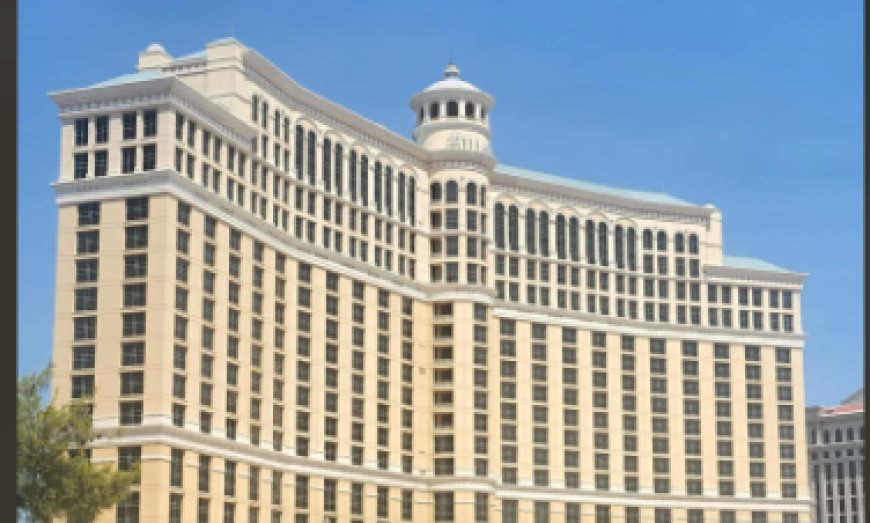
The city of Las Vegas is a destination that offers a multitude of experiences, from magic shows and musicals to restaurants with renowned chefs and lively nightlife. It's a place where architecture and design are taken to the extreme to create an atmosphere of fantasy and entertainment.
The two days in Las Vegas was an excellent addition to our trip!
Back home, longing to leave
What an incredible journey! In fact, coming home perfectly sums up the feeling of an experienced traveler. After exploring Alaska aboard Royal Caribbean's majestic Anthem of the Seas, exploring the natural and historical wonders of Canada, immersing yourself in the effervescence of Las Vegas, and even witnessing the grandeur of aeronautical engineering at the Boeing factory, it's only natural that the return is bittersweet.
Crossing the skies in a variety of aircraft - from the agile CRJ 700 and 900 from Bombardier, through the versatile Airbus A321 from Airbus, to the robust Boeing 737-8 and 737-9 - is an experience in itself, connecting us to different landscapes and cultures. The miles traveled, whether on foot through Skagway's charming streets, in comfortable tour buses or fast cabs, add up to a rich tapestry of memories.
Arriving back at TF Green Airport, in Warwick, Rhode Island, is a sign that the current adventure has come to an end. But for travelers like my wife and me, the end of one trip is just a prelude to the next. The "desire to set off again on new adventures" is the flame that keeps the exploring spirit going, the promise of horizons yet to be discovered and stories to be lived.
Text: Moises Santiago
Photo: Ana Lomba















